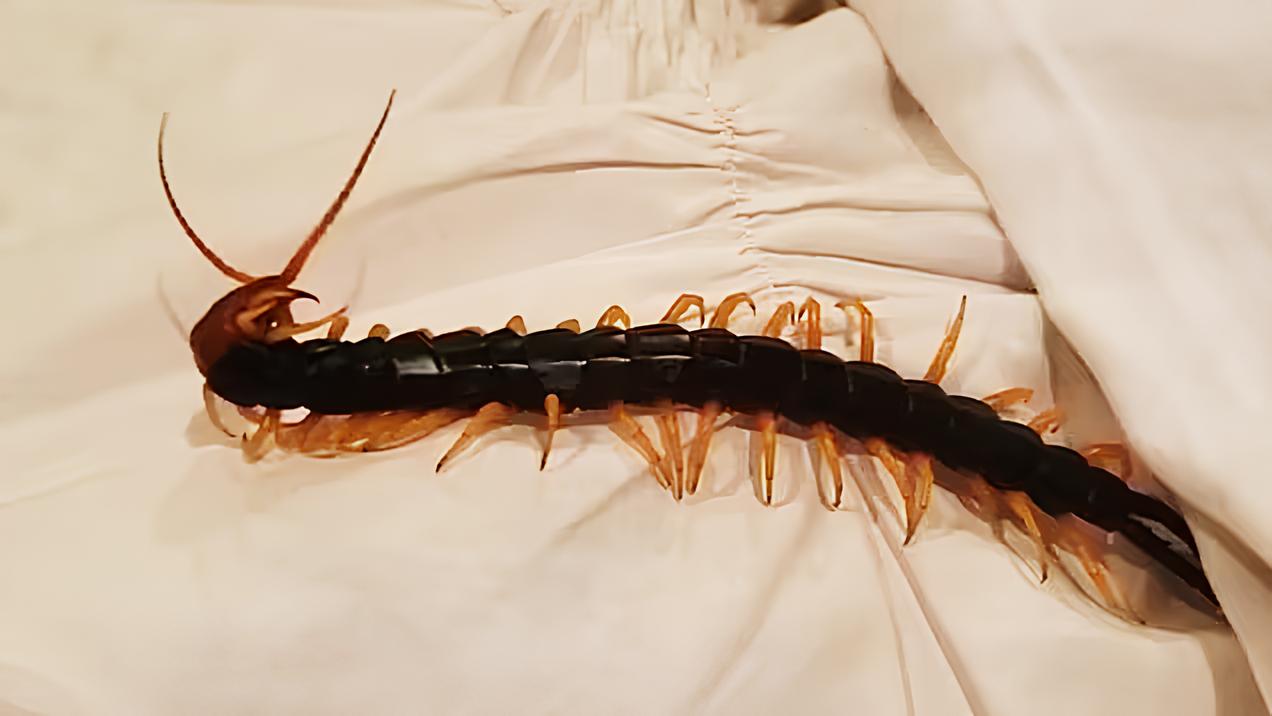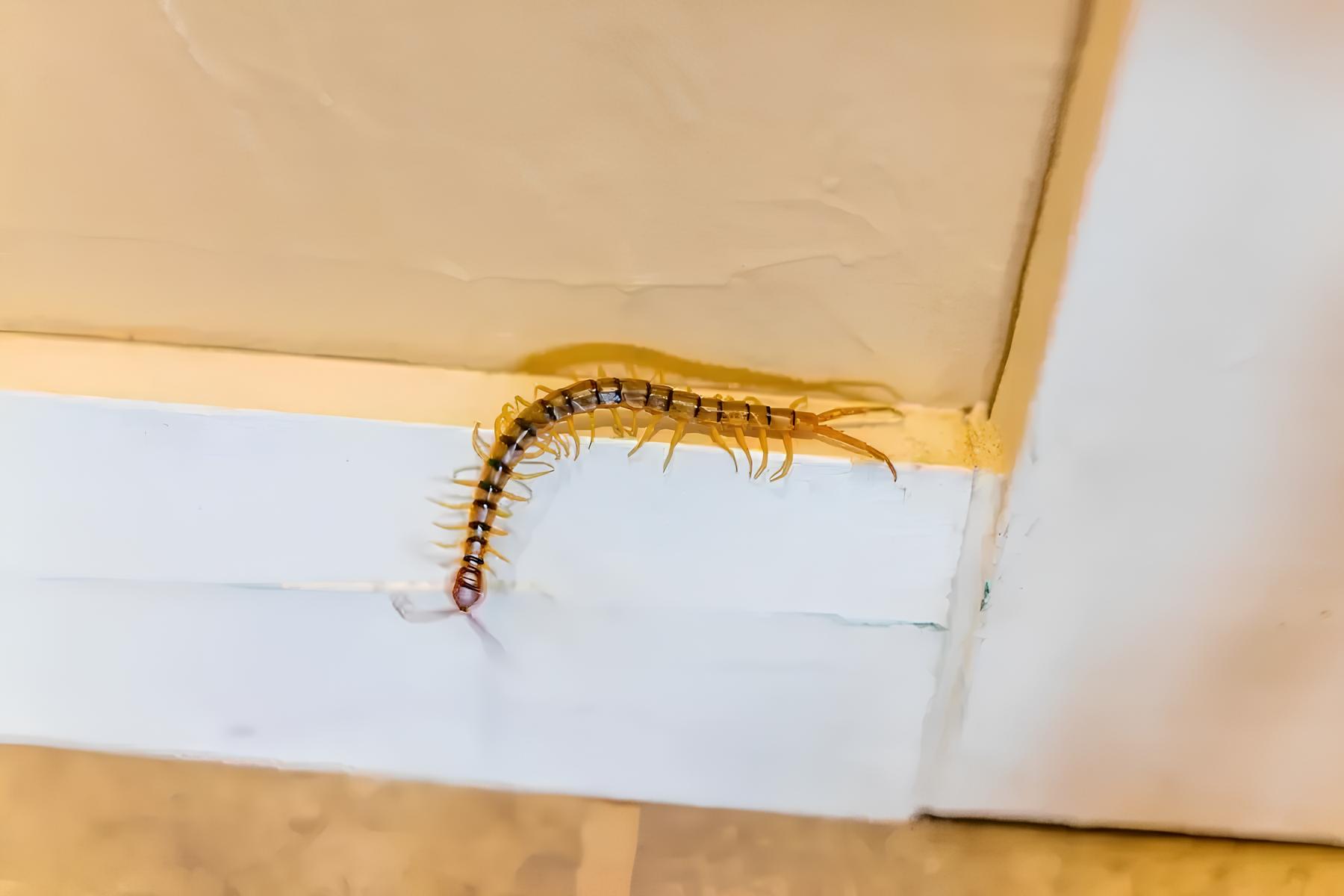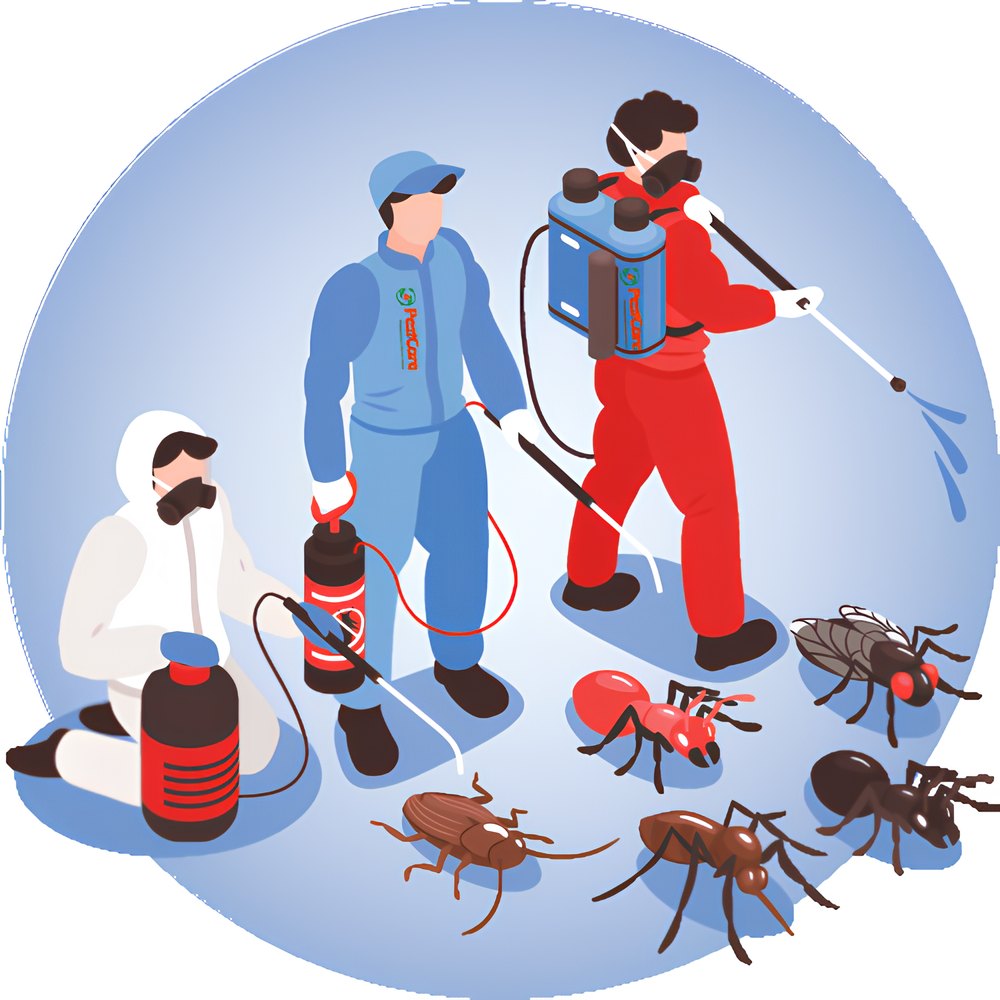You would never want to share your bed with creepy-looking, small crawling insects such as centipedes, who are most likely to hide in damp and dark spots at your home. Contrary to popular belief, a centipede does not bite human skin; rather, it hunts for its prey, i.e., cockroaches, bed bugs, moths, flies, and spiders. Centipedes survive in warm temperatures, and since the temperature inside a home is suitably hot for the centipedes, they are most likely to stroll around.
Although a house centipede is considered beneficial to kill the harmful insects allegedly present in a home, seeing them on your bed is not a pleasant sight at all. To keep these creepy insects out of your bed, you need to understand what kind of centipede it is: a home centipede or a giant centipede. A home centipede does not cause any harm and keeps on hunting its favorite food, i.e., INSECTS. However, the presence of a giant centipede in a home should not be avoided, as its venom can actually be harmful to humans.
What is a Centipede?
A centipede is a tiny arthropod with multiple legs and can regenerate itself by dropping their legs. The most commonly occurred centipedes are brown in color and can be found living individually and not in the form of colonies. A centipede possesses a pair of legs per body segment and two claws on the first pair of legs, which it uses to defend against its predators. Although a centipede does not bite a human more often, any contact with its venom may lead to fever, swelling, or shivering, and for sensitive people, their bite even leads to anaphylactic shock.
A house centipede’s elongated and straight legs differ from other species, which can hold multiple insects. Another important aspect of a centipede is that it does not build a trap for its prey rather, it seeks and attacks its prey actively through its legs. The eyes of a house centipede are well-developed and have a very sharp vision, which helps it catch its prey easily. It has an antenna developed in its head that detects its prey by producing vibrations from far-off places. A centipede’s average life span is four years, meaning it starts laying eggs at the age of one. For the survival of the eggs, the centipede needs to look for warmer spots where they can also find their food easily. This is the main reason why centipedes mostly live under the dark spots of your house.
In tropical regions with warmer climates, the centipedes easily find their way into the house because their bodies are better adapted to the hotter climate. Also, because the infestation of the insects is higher in the warmer regions, a centipede is more likely to be found in these areas in search of prey. Due to their nocturnal nature, they leave their hiding spots at night and enjoy dining on their favorite insects. They are extremely sharp and smart hunters who do not waste their venom on any prey that will not have any effect on it, for example, on humans. Seeing centipedes on your bed or feeling them crawl on your face is the most horrible thing one could imagine at night. They come out of their spots at night, are attracted to the warm temperature of your bed, search for the bed bugs, and quickly return to their spots. These witty centipedes create their nests mostly in the places in the house that are left uncleaned more frequently.
Tips to Keep Centipedes Out of Your Bed
So, you are struggling to get rid of these tiny centipedes that creep you out in the night; here, we have compiled effective ways to keep these crawling creatures out of your bed. Centipedes are always searching for food, so they dwell in the cracks and holes of the walls where they find food. Do not let your bed become a buffet for these centipedes, and be cautious before they start producing harmful toxins.
Seal Those Cracks
Cracks and holes are significant hiding spots for these centipedes, so wherever you see a crack in your wall, make sure to seal it so they will not find any spot to get in. The cracks in the floors and pipes are the favorite spots for these centipedes to lay their eggs, so it is important to inspect your house to look for these cracks thoroughly. Look for even the tiniest holes near the doors and window frames and seal them with a sealant that will help minimize the invasion of all kinds of pests.
Set up The Traps
Sticky traps are a great way to determine if there is any pest infestation in your house. This is an inexpensive yet effective way to detect the infestation of centipedes and helps you get rid of these witty creatures without any pesticides. Keep an eye on these traps, dispose of the trapped centipedes, and then replace these traps when required. However, since the centipede can shed its leg without harming its body, you may find only its legs trapped in the sticky trap, not the centipede’s body. If you want to create a DIY trap, you may place cardboard on the floor and bait it to attract centipedes. Once you see them moving on the cardboard, flip it, and this tiny insect will be trapped inside.
Sprinkle Cayenne Pepper
Cayenne pepper works great as a pest repellant. It does not kill the centipedes, but its strong fragrance helps keep centipedes away from invading your house. Create a barrier of cayenne pepper by sprinkling it around the spots that you may consider as the entry points of the centipedes, such as plants, the edges of the garden, window frames, doors, or any crack on the floor. The fragrance of cayenne is toxic for the pests, and do not let them invade your property without killing them.
Using a Steamer
As we know, centipedes are mainly attracted to pests, so the first thing to do is control the pest infestation to keep the centipedes away from invading your house. Using a streamer works great to eliminate the pest and its feces around the house so the centipedes do not find any attraction inside. The high-quality steamers available in the market ensure that no food residues are left on the floor upon which the pests, especially cockroaches, feed.
Put Some Cinnamon Oil on the Floor
The strong smell of cinnamon keeps the centipedes away, as these crawling creatures do not like it. This is a handy and easy-to-apply home remedy, as cinnamon is easily available in almost every house. Soak some cotton balls in the cinnamon oil and put these balls in places where there is any chance of centipede invasion. If you feel dizziness due to the cinnamon fragrance, you may use tea tree oil as an alternative.
Get Rid of Excess Humidity
Humidity is a major attraction for a centipede and is one of the important reasons for spotting a centipede on your bed. Any leaked pipe results in welcoming a centipede into your house. To combat it, you need to ensure that there is no excess humidity in the surroundings, and for that, you need to seal the leakages, which will prevent centipedes from climbing on your bed. You may seal this leakage spot through a spray foam insulator or use a dehumidifier to control the humidity inside the house. There are silica packets available in the market which help in drawing moisture from the surroundings. You may put these packets on the spots where there is any humidity, and these packets will absorb the excess humidity effortlessly.
Take Care of Your Garden
Your garden is a welcoming spot for most insects and especially centipedes. They create nests in the growing shrubs and branches, so cutting these down as soon as possible is important. These spots also encourage centipedes to lay their eggs, so removing extra-grown branches is advised as not letting these insects create a habitat in your garden. By implementing these home improvement practices, you can create a less hospitable environment for centipedes and reduce their presence in your living spaces.
Take the Help of a Pest-Controlling Service
If the growth of centipedes becomes out of control and, besides putting traps for them, you cannot keep them away from your room, this is the time to seek professional help. A centipede infestation inside a home strongly signals a pest infestation around, which should be strictly controlled. A pest-controlling team thoroughly examines your house and fumigates the entire property.
Bottom Line
Having centipedes at home is not a serious concern; however, once they start laying their eggs in the dark spots of your home, it would be tough to control their growth. A centipede is found to be quite helpful in combatting the pest population in the environment, but this is not an optimum solution for having them in your room. You need to be careful with controlling the growth of these crawling creatures and keep them out of your bed by setting traps for them.
Frequently Asked Questions (FAQs)
Why is a centipede attracted to the bed?
Centipedes love to stay in warmer conditions, and your bed at night is most close to providing a bit of heat to the centipede. Also, since your bed is most likely to have an infestation of bed bugs, a centipede is attracted to your bed to feed on these bed bugs.
How to kill the baby centipedes?
The baby centipedes can be killed easily by using a vacuum cleaner. Since the nymphs of centipedes are tiny, killing them in this stage will prevent their growth.
How to find out if there is a centipede infestation in your house?
If you find centipedes inside the drains, this indicates that these have created an infestation. Also, if you see holes or tiny cracks in your furniture and floor, it indicates a centipede infestation.
Where does a centipede lay its eggs?
A centipede usually lays its eggs under wood or rocks, near the water, or in holes or cracks on the floor. You may also find the eggs of centipedes inside indoor or outdoor plants.
Are centipedes harmful to humans?
Although a centipede does not bite humans, any contact with its venom may cause chills, fever, and body pain. However, these conditions are temporary and are not fatal.
How to clean a centipede bite?
To clean a centipede bite and prevent it from causing any infection, you should clean the bite with warm water and rubbing alcohol. It will prevent the centipede bite from getting infected and spreading on the body.
Does a centipede climb?
The multiple legs help centipedes climb walls, beds, and ceilings. They have tiny hook-like structures on their legs at the back, which help them climb and cling strongly.
How can I identify a centipede?
A centipede’s body has several tiny legs, making them different from other insects. They have a pair of legs on each segment and a pair of appendages on their head which is used to identify them easily.
What does a centipede feed on?
A centipede feeds on insects like a moth, spiders, cockroaches, bed bugs, worms, and flies and is more likely to find in places where any of these pests are infested.
How many phases are there in the lifecycle of a centipede?
There are three phases in the lifecycle of a centipede, i.e., egg, nymph, and adult.
What is the lifespan of a centipede?
The life span of a centipede is near to four years, and it starts reproducing only at the age of one.
Which essential oils work effectively in keeping centipedes away from your room?
The oils such as peppermint oil, lavender oil, citrus oil, tea tree oil, and vanilla oil are found to be effective in keeping centipedes away from your rooms.
Why do centipedes only appear at night?
Centipedes do not like to expose their bodies to the bright light, and becuase their prey, i.e., insects, come out of their hiding spots at night, centipedes only come out at night.

John Davis is a passionate content writer with a knack for crafting engaging narratives across various subjects. With a keen eye for detail and a love for storytelling, John brings ideas to life through the power of words. His dedication to delivering high-quality and informative content has made him a trusted voice in the digital realm. When he’s not at his desk, you’ll find John exploring new hobbies and seeking inspiration in the world around him.










Loading…